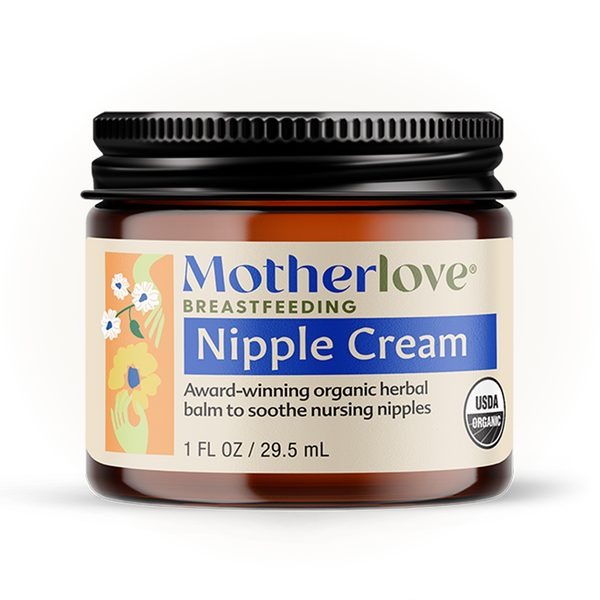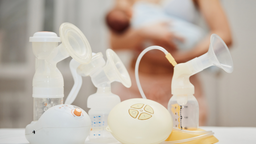We’re very pleased to share an interview with Nikki Lee, author of Complementary and Alternative Medicine in Breastfeeding Therapy.* She is a lactation consultant with over 35 years of experience working with new mothers and babies.
Nikki’s book explores the use of a variety of complementary and alternative therapies to solve breastfeeding problems. We asked her to explain how several of them can support breastfeeding, as well as to explain her observations of a “cathartic triad of behaviors” in babies returning to the breast after a period of refusal.
INTERVIEW:
You say that acupuncture and chiropractic can be helpful in solving breastfeeding problems. Can you describe ways in which each practice can help nursing mothers?
Acupuncture
Acupuncture is an art and science that is 5,000 years old. Acupuncture uses a fine needle to stimulate particular points on meridians, pathways of energy flow. The goal is to improve energy flow to relieve illness and disease. Currently, the National Institutes of Health finds that acupuncture is effective for treating of a number of ailments. A nursing mother could use acupuncture to treat a low milk supply or symptoms of mastitis.
Acupuncture stimulates an increase in milk production because milk making (prolactin) and milk moving (oxytocin) hormone levels rise after treatment. In one case, a woman received acupuncture for pain and swelling after a mastectomy. The treatment relieved her discomfort and stimulated milk leaking; she last had lactated 4 years previous. Another Chinese study found that acupuncture increased milk supply in 28 women. (Li, Ke A Pilot Study to Evaluate the Effect of Acupuncture on Increasing Milk Supply of Lactating Mothers. 2003 Coursework Master thesis, Victoria University).
Ear acupuncture administered by a Chinese physician helped to increase milk supply in a participant attending a breastfeeding conference; the increase was seen 24 hours after treatment. Swedish midwives studied the effect of acupuncture on mastitis and concluded that acupuncture was helpful in relieving symptoms.
On a personal level, I saw a Chinese physician for a collection of symptoms (profound hair loss, low energy, vaginal dryness, menstrual flooding, and insomnia) that developed when my nursling was 4 years old. This Chinese doctor diagnosed a sub-clinical Sheehan’s syndrome, the consequence of a postpartum hemorrhage. She treated me with acupuncture and herbs and the symptoms disappeared for good after 4 visits.
Chiropractic
Chiropractic is useful for both nursing mothers and their babies.
Chiropractors are licensed health care providers who work on the spine, the vertebrae and the joints in a signature strategy called an adjustment. The purpose of adjustment is to restore joint mobility and reduce nerve compression. Adjustment is done by manually applying a controlled force into joints that have become misaligned or dislocated. Restrictions and misalignments can be caused by a single traumatic event, such as improper lifting of a heavy object, an automobile accident, a difficult birth, or by prolonged repetitive movement. Such trauma affects joints, causing inflammation, pain, and diminished function. Adjustment of the affected joint and tissues moves the joint into alignment, and restores mobility, alleviates pain and muscle tightness, and allows tissues to heal. The controlled force, from light fingertip manipulation to directed high velocity touch, varies with the style of practitioner, and the situation.
La Leche League identifies chiropractic as an effective modality for babies damaged by vacuum or forceps, whose muscles and bones are not working well together so that the baby is in pain, or is a poor feeder. As a poorly feeding baby does not drain the breast sufficiently, the dyad suffers the secondary impact of reduced milk production.
Anecdotal reports describe situations where chiropractic adjustment reduced inflammation and compression of intercostal nerves that connect the nipple, areola and breast with the pituitary gland. The result is an increase in milk supply.
You are both a lactation consultant and a craniosacral therapist. Can you share some stories from your practice in which craniosacral therapy has helped to solve breastfeeding problems?
In a recent case, a mother brought her 2-year old toddler to see me for craniosacral therapy. Breastfeeding had been difficult for them from the beginning, due to his tongue-ties. At birth, he had a classic heart-shaped tongue, indicating an anterior frenulum restriction. Lactation consultants had given the mother strategies to minimize her nipple pain and trauma while she searched for a practitioner who would treat the tongue-tie; this is a challenge because some physicians don’t consider an infant tongue-tie to be a problem worth treating. (Some have gone so far as to forbid lactation consultants to even mention the term “tongue-tie” to any mother.) As this mother was completely dedicated and devoted to breastfeeding, she had endured varying degrees of pain and milk supply issues for 9 months.
When her son was 9 months old, the anterior tongue-tie was clipped, a simple procedure taking a minute or two that can be done in an office visit. There was some improvement initially, but breastfeeding was still painful. The reason was that her baby had also a posterior tongue-tie, one more difficult to diagnose and to treat. It took her nearly a year to find a practitioner willing to treat the posterior tongue-tie. Insurance issues complicated the situation, and so did time spent with an infant occupational therapist. Finding a physician to treat the posterior tongue-tie was another challenge for this frustrated mother, as the ones she talked with were reluctant to re-examine a situation that was considered to be resolved. Physicians that will clip a tongue-tie can be resistant to the notion that the revision may need to be done again (if scar tissue restricts tongue mobility) or that there may be more than one restriction, as with this case.
In the journey to pain-free breastfeeding, her baby had received painful and invasive treatment from enough different people to the point where learning to eat solids foods was difficult. He had also learned ways of eating with a restricted tongue that were difficult to unlearn. He gagged and vomited easily, and rejected new foods. He was resistant to the exercises that are a necessary part of rehabilitation after a tongue-tie is clipped. She came for craniosacral therapy for relief.
My first goal was to create an atmosphere of safety, where her toddler would feel safe and agree to let me touch him. Our first visit together was spent walking in a park, and playing and exploring in my office. I showed him what I wanted to do on a stuffed animal. He played with the Legos I had put under my massage table while his mother and I talked. I worked on him energetically, visualizing healing light around him, without touching him except briefly and lightly, on his back or his arm. He is a darling little boy, who has been exquisitely parented; he was so verbal that I found it difficult to remember that he was only 2 years old!
Our second visit, about 3 weeks later, started with him entering my office and staring into my eyes. We gazed at each other for what seemed like a long time, but was probably only a minute or two. He seemed satisfied with the long scrutiny. He then noticed the stack of books I had put under the massage table and went to them; I asked if he would like me to read him a story and he agreed. I sat cross-legged on the floor, and he came and sat in my lap! I worked on him with my hands while I read him stories. CST touch is gentle and I worked on his shoulders, back and chest, using techniques of direction of energy, still point, and regional tissue release. Our session lasted for an hour.
Over the next few weeks, his mother reported that he had started to feed himself and that he was participating in some exercises we had developed to increase his tongue mobility. Over the subsequent months, eating became a stress-free activity of daily living to the point that the mother did not feel a need for a third visit. They continue to breastfeed, with pleasure!
Craniosacral therapy (CST)
CST is helpful to breastfeeding in cases where the baby has torticollis, or where breastfeeding is painful, or where the mother feels distant to her baby. Birthing practices in most hospitals are so brutal and technologically driven that mothers and babies don’t get to fall in love before they are discharged to home. Craniosacral therapy is particularly effective in such situations.
An example of craniosacral therapy being useful to establish a loving, close connection is the case of the mother who gave birth to premature twins. The babies spent 5 weeks in a NICU that was described by the mother as “breastmilk friendly, but not breastfeeding friendly.” She had pumped enough to have a full milk supply and wanted craniosacral therapy to help the babies get to breast. As part of my style of CST, I put her babies skin to skin, where they happily remained until the visit was over and I left. In the follow-up telephone calls, the mother reported that she had kept her twins in skin-to-skin for over 5 hours, feeling such bliss that she got teary on the telephone when talking about it. She felt that she had finally become their mother, instead of their sole food provider and caregiver. In another case, the mother said, “This is MY baby” after nearly 3 months of mothering, a significant and profound shift showing that she had finally taken her baby deep into her heart.
A good place to find a CST practitioner is on the Upledger Website. On that site is a page, “Find a Practitioner”, where a zip code may be entered to find local practitioners. Look for someone who has taken many courses and workshops, as there are plenty of folks that take one course to satisfy their curiosity and then stop formal study.
If one’s locale lacks a CST practitioner, then look for an osteopath or chiropractor who is skilled at working with infants. Word of mouth in one’s community is the best validation of practitioner skills.
You describe a “cathartic triad” of behaviors in which a baby who is refusing the breast will “tell a story.” Can you explain what you mean by this and what you have observed?
Over years of practice, I have noticed that some babies, when put skin-to-skin with their mothers to facilitate self-attachment and breastfeeding, would crawl to breast and root. Instead of then latching-on and suckling, these babies would have an emotional outburst. They would wail, or turn red-faced, or pound on their mother’s chest, or cry piteously. After this emotional outburst that could last 5 or 10 minutes, these babies would fall into a deep sleep for between 10 and 20 minutes. After they woke up, some would then crawl to breast and self-attach and suckle. Others would repeat the cycle of rooting, having an emotional release, and then sleeping; sometimes a baby would repeat this cycle 5 or 6 times.
In my clinical experience, babies going through this cycle of behaviors would all eventually go to breast. I observed this cycle of 3 behaviors (Root, Release of emotion, and Rest) often enough that it could be predicted; the cycle has been named the cathartic triad, and consists of the 3 Rs. It is called cathartic; because when one experiences a cathartic event, one is cleansed and purged of the past and life becomes easier.
There is no way to predict when which baby will have a cathartic triad. When babies express emotion, they are usually soothed; a pacifier is put in their mouths or they are cuddled, swaddled or rocked. While the instinct to comfort a crying baby is powerful, I believe that if the listener has lots of experience and knows infant language, it is safe to let the infant express itself. The baby tells its story, just as “talking it out” is part of feeling better for adults. Adults talk to friends and family about a toothache or a car accident or a divorce or about trying to find the right shoes for a child. If we have some accident or upset, talking about it is a relief; then we feel better and then move on. Adults will pay money to talk to a therapist or a counselor about past feelings, and find relief in the counseling situation Babies are human too and feel better after they tell their stories.
Megen J. Kuhn, RN, BSN, a nurse who has worked in NICU for over 6 years, has witnessed these behaviors, even with very immature babies. (M.Kuhn personal communication, 2/24/11) Nurses and midwives from around the world have also shared with me that they have noticed the behaviors as well.
You advocate a practice called “remedial co-bathing.” What does this look like, and how have you seen it help with breastfeeding?
When a mother wants to breastfeed and can’t, she is not having fun with her baby. This can lead to premature weaning because there is little fun or pleasure to balance the hard work of working to build a milk supply or create comfortable breastfeeding. In some cases, there is also a time pressure to fix breastfeeding, as the mother is returning to school or employment outside the home. Remedial co-bathing is a way to offset that pressure with fun and pleasure. The mother can have some sweet time cuddling and counting toes without focusing on her breasts and milk production. Offering a mother something fun to do with her baby lightens the atmosphere, reduces tension and reinforces that fun is an essential part of mothering and life.
I have seen remedial co-bathing work wonders. One example was the case of a 42-year-old first time mother who had gone through years of infertility interventions, an induction, a cesarean section and a baby that spent the first few days of life in the Intensive Care Nursery. This mother had a difficult time adjusting to the fact that she had a live baby; all her energies for the previous 7 years were centered on getting and staying pregnant. Remedial co-bathing helped this high-powered attorney make the transition into motherhood. The bath with her sweet baby was such a joyful time for her that she took three of them a day for a few weeks!
In today’s era, where anything new usually means a purchase, it is wonderful to have a strategy that can be done immediately with what is already available in most homes. Australian midwife Heather Harris describes remedial co-bathing as “high-touch and low-tech.” Ms Harris also says, “Let us remember that the bottom line is for the mother and baby to enjoy this event.”
In summary, complementary and alternative medicine can be helpful to restore connection between mother and baby, to improve milk supply, to improve breastfeeding behaviors, and to treat clinical conditions affecting the mother or the baby. A trend for 21st century healing is Integrative Medicine, where allopathic (or mainstream) medical practices are combined with complementary and alternative practices to address physical, emotional, and spiritual needs. I feel Integrative approaches are appropriate to breastfeeding therapy as well.




